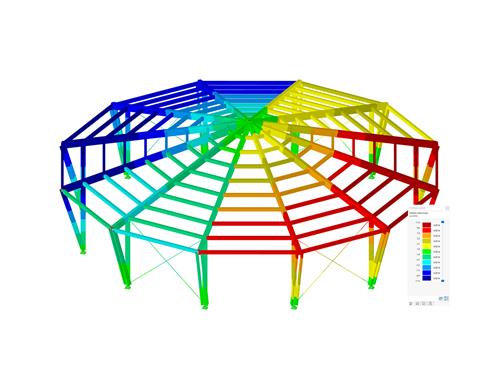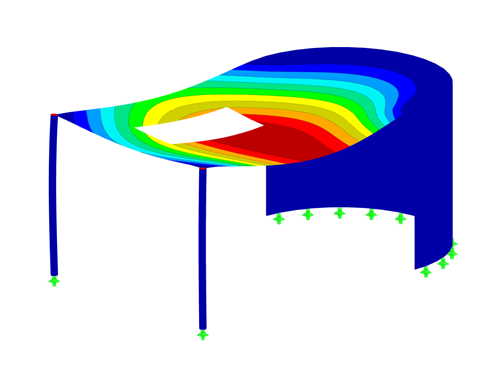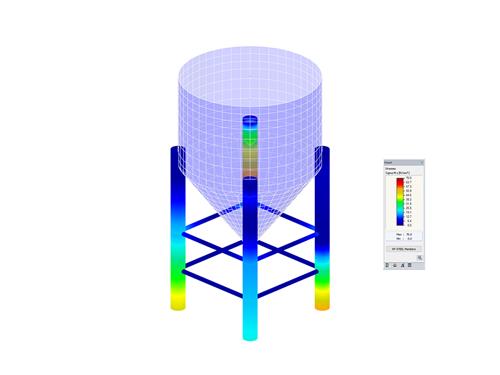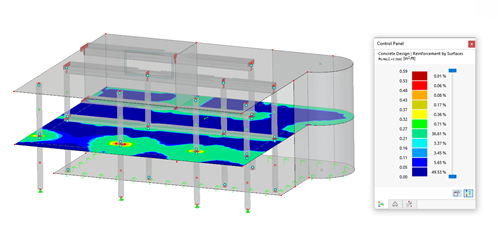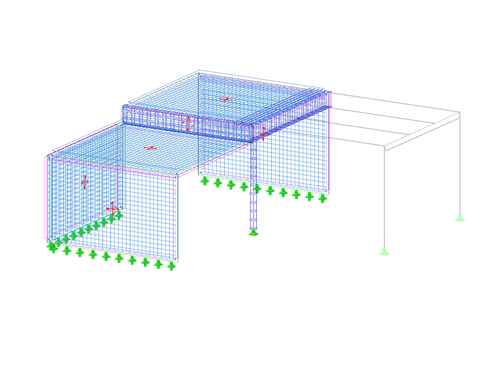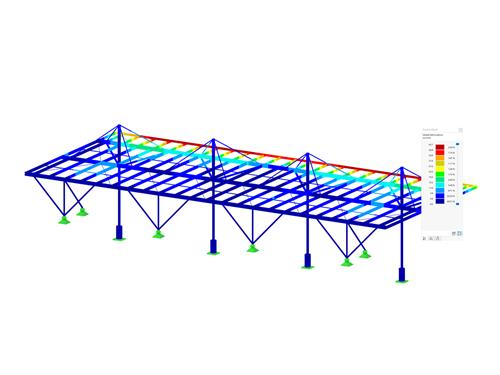
Online Manuals
Find out more about our programs and add-ons on our website. Are you already a proud owner of one or more programs? Find the online versions of the manuals, introductory and exercise examples, as well as further documentation here. We wish you a successful and pleasant working with Dlubal Software.
The FEA software RFEM allows for the modeling and structural analysis of general plate, shell, and member structures. It is also possible to analyze combined structures as well as solid elements and objects with contact properties.
This user manual describes the modeling, calculation, and result evaluation features related to the structural analysis.
The frame & truss analysis software RSTAB allows for the modeling and calculation of general frame, beam, and truss structures. The powerful computation kernel enables linear or nonlinear determination of internal forces, deformations, and support reactions.
This user manual describes the modeling, calculation, and result evaluation features related to the structural analysis.
RFEM dialog boxes are shown for images of dialog boxes that are identical to RFEM.
RFEM and RSTAB are powerful programs, helping structural engineers meet requirements in modern civil engineering. This short introduction will help you with the first steps and familiarize you with the most important functions of the software.
In this tutorial, we would like to inform you about the essential features of the RFEM program. The first part shows how to create the structural objects and loads, combine the loads, perform a structural analysis, check the results, and prepare the data for printing. Eurocodes with the CEN settings are used as standards.
In this tutorial, we would like to inform you about the essential features of the RFEM program. The first part shows how to create the structural objects and loads, combine the loads, perform a structural analysis, check the results, and prepare the data for printing. The US codes are used as standards.
The Stress-Strain Analysis add-on performs a general stress analysis by calculating the existing stresses and comparing them with the limit stresses. Strains for surfaces and solids can also be determined.
During the stress analysis, the maximum stresses of solids, surfaces, and line welds (RFEM only), as well as members are determined. The governing internal forces are also documented for each member and each surface. Furthermore, there is the option of an automatic section or thickness optimization including the update of the sections or surface thicknesses modified in RFEM/RSTAB.
This manual describes the Stress-Strain Analysis add-on for the programs RFEM 6 and RSTAB 9.
The Concrete Design add-on allows you to design reinforced concrete members and surfaces according to various design standards. It is possible to perform the ultimate limit state and serviceability limit state design checks. The input and result evaluation are completely integrated in the user interface of the structural FEA software RFEM and the frame & truss analysis software RSTAB.
This manual describes the Concrete Design add-on for RFEM 6 and RSTAB 9. In RSTAB, you can only design members and member sets, not surfaces.
In this tutorial, we would like to inform you about the essential features of the RFEM program. In the first part, a model was defined and a structural analysis was carried out. The second part deals with the concrete design of the slabs, walls, beams, and the column according to EN 1992‑1‑1 with the CEN settings.
In this tutorial, we would like to inform you about the essential features of the RFEM program. In the first part, a model was defined and a structural analysis was carried out. Now, the second part deals with the concrete design of slabs, walls, beams, and the column. ACI 318-19 is used as a standard.
The Steel Design add-on allows you to design steel members according to various design standards. Cross-section resistance checks, stability analyses, and serviceability limit state design checks can also be performed. The input and result evaluation are completely integrated in the user interface of the structural FEA software RFEM and the frame & truss analysis software RSTAB.
This manual describes the Steel Design add-on for the RFEM 6 and RSTAB 9 programs.
.png?mw=500&hash=547bb5653aed1342c6edea888af19ebcfe12c5fb)
